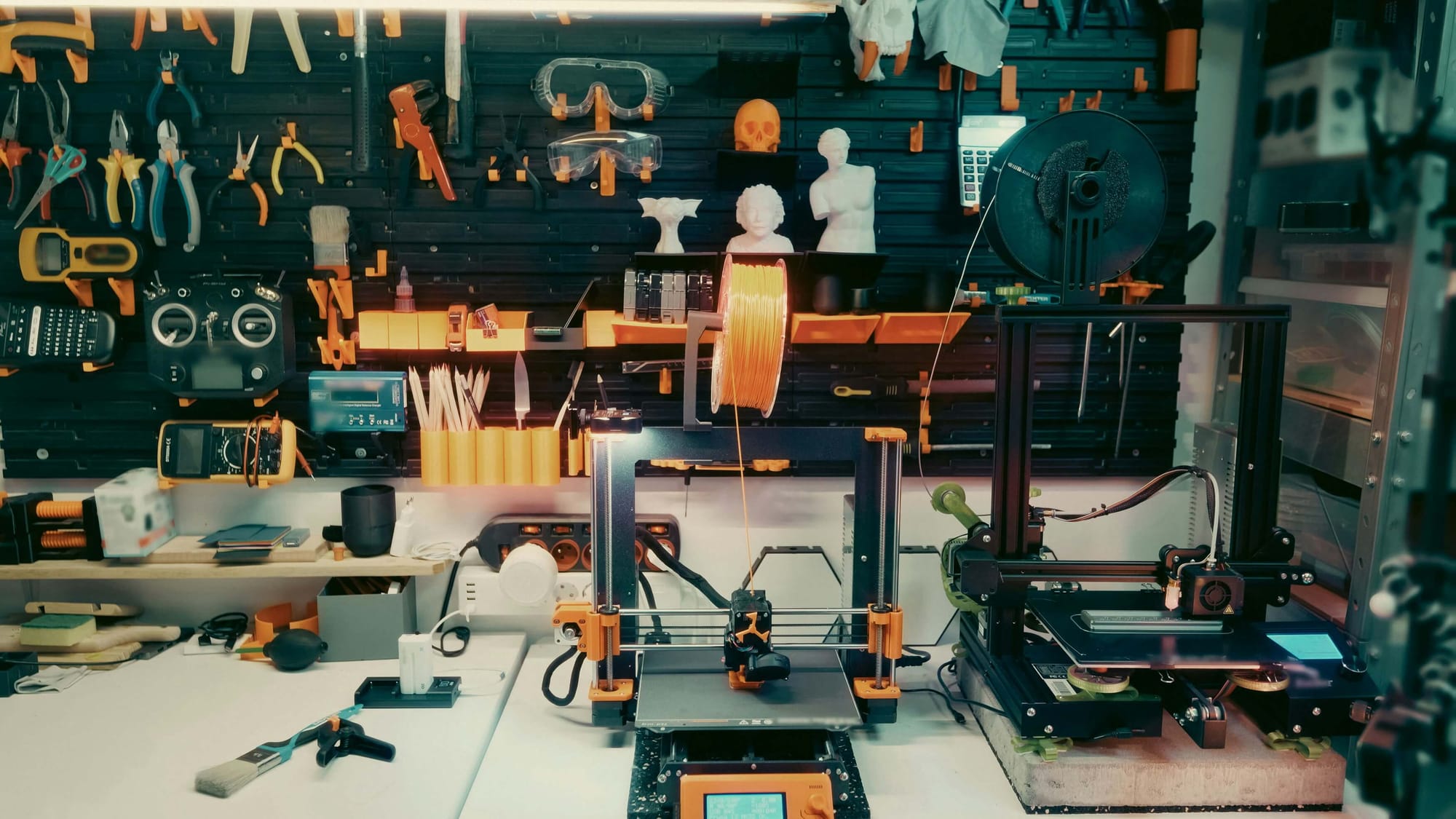Wood manufacturing is one of the oldest industries in the world and has been used for centuries to build everything from furniture to homes. Despite its long history, there are multiple issues and challenges that the wood manufacturing industry faces. Let us learn about wood manufacturing and what are some challenges and issues.

This article covers the following:
- Wood Manufacturing Basics
- Types of Wood
- Tools of the Trade in Wood Manufacturing
- Benefits of Wood Manufacturing
- Wood Manufacturing Techniques
- Wood Manufacturing Safety
- Common Wood Manufacturing Problems
- Trends in Wood Manufacturing
- Wood Manufacturing Resources
- History of Wood Manufacturing
- How can Deskera assist you?
Wood Manufacturing Basics
Wood manufacturing is the process of transforming raw materials, such as lumber, into usable products. It can involve many different steps, including sawing, drying, milling, laminating, pressing, gluing, and finishing.
Each step requires specific tools, techniques, and knowledge to do it right. In this blog, we’ll discuss the basics of wood manufacturing so you can get a better understanding of how it works.
The first step in wood manufacturing is selecting the right lumber. Different types of wood have different characteristics and are suitable for different uses. Hardwoods such as oak, walnut, and mahogany are ideal for furniture, while softwoods such as pine, fir, and spruce are better for construction.
Selecting the right wood for a project is essential for a successful outcome. Once the wood is selected, it needs to be cut to the desired shape and size. This is done with a saw, such as a table saw, band saw, or circular saw.
The saw is used to cut the wood into the correct shape, size, and thickness. It’s important to use the right saw for the job and to use the proper safety gear when operating a saw. After the wood is cut, it needs to be dried.
This is done by exposing it to air and heat in a controlled environment. The drying process removes excess moisture from the wood and prevents it from warping or cracking. Once the wood is dry, it needs to be milled.
This involves using machines to shape the wood for specific purposes. Machines such as planers, routers, and jointers can be used to create intricate shapes, grooves, and edges. The next step in wood manufacturing is laminating.
Laminating is the process of bonding two or more pieces of wood together to make a single piece. It’s often used to create furniture, cabinets, and other products that need to be strong and durable.
After the wood is laminated, it needs to be pressed. This involves using a press to flatten the wood and give it a smooth finish. It’s important to use the right amount of pressure and not press too hard.
The last step in wood manufacturing is finishing. This involves applying a protective coating, such as paint, varnish, or wax, to the wood. The finish helps protect the wood from scratches, moisture, and other damage.
These are the basics of wood manufacturing. It’s a complex and intricate process that requires knowledge and skill to do it right. But with the right tools, techniques, and knowledge, anyone can create beautiful and functional products from wood.
Types of Wood
Wood is one of the most versatile materials used in manufacturing today. It’s been used to create everything from furniture to buildings, and it continues to be a go-to material for a variety of projects. But not all wood is the same. Different types of wood have different properties and uses, so it’s important to understand the different types in order to choose the best wood for your project.
Softwoods
Softwoods are typically used for construction purposes and are derived from evergreen trees like pine, fir, and cedar.
Softwoods tend to be less dense than hardwoods, and they’re often more affordable. They’re great for furniture, but they’re more prone to scratches and dents, so they’re usually not the best choice for high-traffic areas.
Hardwoods
Hardwoods, on the other hand, are usually derived from deciduous trees like oak, maple, and cherry. They’re denser and more durable than softwoods, making them an ideal choice for furniture and flooring. Hardwoods also tend to be more expensive than softwoods, but their durability and beauty make them worth the extra cost.
Engineered Wood
Engineered wood is a combination of real wood and synthetic materials like plastic and resin. This type of wood is often used for structural applications, such as flooring and cabinetry. It’s also less susceptible to warping and shrinking than solid wood, making it an ideal choice for humid climates.
Plywood
Plywood is made up of thin layers of wood veneer that are glued together to create a strong and durable material. It’s usually used in construction and furniture-making, and it’s often cheaper than solid wood. Plywood is also less prone to warping than solid wood, making it a great choice for outdoor projects.
Particle Board
Particle board is a type of engineered wood made up of wood particles and a binding agent. It’s often used for low-cost furniture and cabinetry, as it’s much cheaper than solid wood. However, particle board is not as strong or durable as solid wood, so it’s not usually used in high-traffic areas.
No matter what type of wood you’re using for your project, it’s important to understand the different types and their properties so you can choose the best wood for your needs. With the right knowledge, you can ensure that your project is as beautiful and durable as possible.
Tools of the Trade
When it comes to wood manufacturing, one of the most important things to consider is the tools you will use. Whether you’re making furniture, building structures, or crafting intricate carvings, the right tools are essential for creating high-quality products. Here’s a look at some of the tools of the trade in wood manufacturing.
Saws
Saws are essential for cutting wood into different shapes and sizes. Different types of saws are used for different tasks, such as circular saws for making straight cuts, jigsaws for curved cuts, and bandsaws for cutting intricate shapes.
Chisels
Chisels are used to carve and shape wood into specific shapes. They come in different sizes and shapes and can be used for a variety of tasks, such as carving out intricate details or creating joints.
Drills
Drills are used to make holes in wood. There are several types of drills, including corded drills, cordless drills, and drill presses. The type of drill you use will depend on the size and type of hole you need to make.
Sanders
Sanders has been used to smooth and shape wood surfaces. They come in different types, such as belt sanders, orbital sanders, and detail sanders. Routers: Routers are used to cut grooves and slots in wood. They can also be used to shape edges and create decorative patterns.
Planers
Planers are used to smooth and shape large surfaces. They can be used to plane a surface flat or to create curved surfaces.
Clamps
Clamps are used to hold pieces of wood together while you work on them. They come in different sizes and shapes and can be used to hold pieces together while you glue them, drill them, or sand them.
These are just a few of the tools of the trade in wood manufacturing. Whether you’re a professional woodworker or a hobbyist, having the right tools is essential for creating high-quality products. Make sure you have the right tools for the job, and you’ll be sure to create beautiful and long-lasting products.
Benefits of Wood Manufacturing
Wood manufacturing has been around for centuries, and it remains a popular choice for many construction and design projects today. It's a versatile material that can be used to create furniture, cabinets, countertops, flooring, and much more.
But beyond its aesthetic appeal, wood manufacturing also provides a number of other benefits that make it a great choice for many different applications. Here are just a few of the advantages of wood manufacturing.
Durability
One of the biggest advantages of wood manufacturing is its durability. Wood is a natural material that is incredibly strong and can resist wear and tear better than many other materials.
This makes it a great choice for furniture, cabinets, and other items that need to last for many years. It's also resistant to water, fire, and other elements, making it an ideal choice for outdoor projects as well.
Eco-Friendly
Wood is an environmentally friendly material that can be harvested from sustainable sources. This means that wood manufacturing does not require the use of harsh chemicals or other materials that are bad for the environment. It also does not produce any emissions, making it an excellent choice for those who are looking for a more eco-friendly option.
Affordability
Wood is one of the most affordable materials available, making it a great choice for those who are looking to save money. It's also easy to find and purchase at a variety of different price points, making it a great option for those who are on a budget.
Additionally, wood is relatively easy to work with, making it a great choice for DIY projects or those who want to save money by doing the work themselves.
Versatility
Wood is a very versatile material that can be used in a variety of different applications. From furniture to cabinets to flooring, wood can be used to create nearly anything. Additionally, wood can be finished in a variety of different ways, making it easy to create a unique look that is tailored to your individual taste.
Wood manufacturing is a great choice for many different applications. From durability to affordability to eco-friendliness, it offers a number of advantages that make it a great option for those looking for a reliable and affordable material to use in their construction and design projects. Whether you're looking for furniture, cabinets, or flooring, wood can provide you with the perfect solution.
What are the Critical Issues and Challenges in Wood Manufacturing?
Wood manufacturing is a critical industry for many countries around the world, providing jobs and contributing to the economy. However, it is also an industry that faces a number of critical issues and challenges. From environmental concerns to the need for better safety standards, wood manufacturing has its fair share of struggles.
Environmental Impact
One of the biggest issues in wood manufacturing is its environmental impact. The timber industry is responsible for a large portion of global deforestation, which can have serious consequences for the environment and biodiversity. Furthermore, the production of wood products often releases significant amounts of air pollution and can have a negative impact on local water supplies.
Safety Standards
Safety is a major concern in the wood manufacturing industry. The use of heavy machinery and the potential for accidents are a constant threat. To address this issue, manufacturers must ensure that their facilities are up to date with the latest safety standards. This includes providing proper training and protective equipment for workers and ensuring that all equipment is in good condition.
Waste Disposal
Wood manufacturing produces a large amount of waste. This includes sawdust, wood chips, and other byproducts of the manufacturing process. Many countries have regulations in place regarding the safe disposal of this waste, which manufacturers must adhere to.
Cost-Effectiveness
Wood manufacturing is a cost-intensive industry. The cost of raw materials, labor, production, and transportation can all add up quickly. To remain profitable, manufacturers must be able to keep their costs low while still producing high-quality products.
By addressing these issues and challenges, the wood manufacturing industry can become more sustainable, profitable, and safe. From improved safety standards to better waste disposal solutions, the industry has a lot of potential for growth and success.
Wood Manufacturing Techniques
Wood manufacturing is the process of creating objects from wood, ranging from furniture and cabinets to intricate sculptures and artwork. The techniques used to make these objects vary from traditional to modern and depend heavily on the type of wood being used.
Wood manufacturing is a craft that has been around since the dawn of mankind, but with today’s technology and advances in woodworking, the possibilities are virtually endless.
One of the oldest and most popular wood manufacturing techniques is woodturning. This technique involves using a lathe to cut and shape wood into various forms. The process typically starts with a piece of wood, which is spun on the lathe, while a cutting tool is used to shape the wood into the desired shape.
Woodturning is often used to create bowls, spindles, and other decorative pieces. Another popular wood manufacturing technique is joinery. This process involves joining pieces of wood together by cutting and fastening them in order to create a larger piece.
Joinery is commonly used to assemble furniture and cabinets and can be used to create intricate designs as well. One of the most common types of joinery is dovetailing, where two pieces of wood are joined together with a dovetail joint.
Carpentry is another traditional wood manufacturing technique that is still used today. This process uses tools such as saws, chisels, and planes to shape wood into desired shapes and forms.
Carpentry is used to produce furniture, cabinets, and other objects that require precise measurements and cuts. Modern wood manufacturing techniques are also available, such as CNC machining.
This process uses computer numerical control to cut and shape wood into complicated shapes and forms with a high degree of accuracy. Laser cutting is also becoming increasingly popular and is used to produce intricate designs and patterns in wood.
No matter the technique used, wood manufacturing requires attention to detail and a great deal of skill. From traditional to modern, there are a variety of methods and techniques that can be used to create beautiful and functional objects from wood. With the right tools and knowledge, anyone can create stunning pieces of furniture and artwork from wood.
Wood Manufacturing Safety
Wood manufacturing is an essential part of the economy, providing materials for construction, furniture, and other applications. It’s also important to note that wood manufacturing is a dangerous occupation, with a high risk of injury for workers.
It’s, therefore important for wood manufacturing businesses to ensure their safety practices are up to date to protect their employees from potential injury. The first step in any wood manufacturing safety plan is to ensure that all employees are properly trained in the use of the machinery and tools used in the manufacturing process.
This includes training on the proper use of saws, planers, routers, and other woodworking equipment. Proper training will also help ensure that workers are familiar with all safety regulations and procedures and that they are using the equipment safely.
Another important aspect of wood manufacturing safety is the use of personal protective equipment or PPE. This includes goggles, face shields, gloves, and other items designed to protect workers from dust and other hazards.
All workers should wear the appropriate safety equipment when working with wood and should be aware of the danger of inhaling sawdust. Safety measures should also be taken when it comes to the storage and handling of wood. Wood should be stored in a dry, well-ventilated area and be kept away from heat sources and moisture.
Workers should also be instructed on how to safely handle wood, including lifting and carrying it safely. In addition to the safety measures listed above, wood manufacturing businesses should also have a plan in place to handle any accidents or injuries that may occur in the workplace.
This includes having the right medical supplies on hand and having a designated first-aid provider in the workplace. Finally, wood manufacturing businesses should also make sure they are compliant with all local and federal safety regulations.
This includes making sure that the work site is properly maintained and that all safety equipment is properly maintained and inspected. Wood manufacturing safety is essential for the safety of workers and for the success of the business.
By ensuring that workers are properly trained, that the appropriate safety equipment is in place, and that safety regulations are followed, wood manufacturing businesses can protect their employees and ensure that their business runs smoothly.
Common Wood Manufacturing Problems
Wood manufacturing is an important part of our society. It is used in almost every industry, in both residential and commercial settings. However, it can be a challenging industry to manage, as it is subject to a variety of different problems that can arise during the manufacturing process. Here, we will discuss some of the common wood manufacturing problems that often occur and provide insight into how to address them.
One of the most common wood manufacturing problems is the presence of knots. Knots are a type of defect that can occur during the manufacturing process, and they can weaken the wood’s strength and cause other problems.
To address this issue, manufacturers should use a process of grading and sorting to ensure that the highest-quality lumber is used for the project. Additionally, the use of special saws that can cut around knots can help to minimize the presence of knots in the finished product.
Another common problem that arises in wood manufacturing is the presence of moisture or humidity. This can cause the wood to swell, warp, and crack, leading to structural issues.
To address this issue, manufacturers should take steps to ensure that the wood is properly dried and stored in a controlled environment. Additionally, the use of sealants and other protective coatings can help to protect the wood from moisture and help to prevent warping and cracking.
Wood shrinkage is another common issue that arises during the manufacturing process. This occurs when the wood loses moisture and shrinks as it dries. To address this issue, manufacturers should use kiln drying methods to slowly reduce the moisture content of the wood.
Additionally, the use of humidity control systems can help to reduce the amount of shrinkage that occurs. Finally, wood manufacturing is also prone to the presence of wood-destroying insects and fungi. These organisms can cause damage to the wood and weaken its strength.
To address this issue, manufacturers should use a process of fumigation or heat treatment to kill any organisms that may be present in the wood. Additionally, the use of protective coatings and sealants can help to prevent the growth of these organisms.
In conclusion, wood manufacturing is a challenging industry that is subject to a variety of different problems. However, by taking the proper steps and using the right processes, manufacturers can minimize the presence of these problems and ensure that they produce high-quality products.
Trends in Wood Manufacturing
Wood manufacturing is an industry that has been around for centuries, and it continues to be an important part of the global economy. Despite the fact that wood can be produced in a variety of ways, the most common form of wood production is through sawing, drilling, and milling.
In recent years, the industry has gone through a number of changes, and today we’ll take a look at some of the most important trends in wood manufacturing. One of the most notable trends in the wood manufacturing industry is the increased use of modern technology.
Companies are now using more sophisticated equipment that can produce higher-quality results in less time. This has allowed them to produce a wider variety of products, as well as produce them more quickly and efficiently.
Additionally, computer-aided design (CAD) software has become more popular, allowing designers to create intricate parts and products that would be difficult to produce with traditional methods.
Another trend in wood manufacturing is the increased use of eco-friendly materials. Wood manufacturers are now turning to more sustainable materials such as bamboo and reclaimed wood, which can be harvested and used in a variety of ways.
This has allowed the industry to be more environmentally friendly while also providing customers with unique and attractive products. Finally, the industry is also seeing increased demand for custom products.
Companies are now offering custom-made furniture, flooring, and doors, as well as customized cabinetry and other wood-based products. This trend has allowed companies to increase their customer base and provide customers with unique and personalized products.
Overall, wood manufacturing is an industry that has seen many changes in recent years. With the use of new technology, eco-friendly materials, and custom-made products, the industry is continuing to evolve and adapt to the changing needs of its customers.
By keeping up with the latest trends, companies can ensure that they remain competitive in the industry and continue to offer high-quality products to their customers.
Wood Manufacturing Resources
Wood Manufacturing Resources for Crafting Your Projects With the rise of DIY projects, woodworking has become an increasingly popular hobby for many people. Whether you’re making furniture, sculptures, or even just a small box, woodworking can be a great way to express yourself and your creativity.
To do so effectively, however, you need access to quality woodworking materials and resources. Here’s a guide to some of the best wood manufacturing resources to help you get your projects off the ground.
Online Woodworking Stores
The internet has opened up a world of possibilities when it comes to finding the materials you need for your woodworking projects. Online stores like Woodcraft and Rockler offer a wide range of woodworking supplies, tools, and hardware.
From hardwoods to exotic woods, you’ll find everything you need to get started. Plus, with the added convenience of online shopping, you can purchase your materials from the comfort of your own home.
Hardware Stores
If you’re looking for more specialized woodworking supplies and tools, you may want to check out your local hardware store. Most hardware stores carry a selection of woodworking tools, such as saws, planes, chisels, and more. Additionally, many hardware stores offer woodworking classes, where you can learn the basics of woodworking and pick up some new skills.
Wood Manufacturers
If you’re looking for high-quality hardwood, you’ll need to contact a wood manufacturer. Wood manufacturers specialize in sourcing and processing hardwood, and they’re the best source for finding exotic and rare woods. Plus, many wood manufacturers offer custom millwork services, so you can have your wood cut to your exact specifications.
Sawmills
Sawmills are another great source of quality woodworking materials. Sawmills specialize in cutting and milling lumber, and they often offer specialty services, such as kiln drying and planing.
By purchasing your lumber from a sawmill, you can ensure that you’re getting high-quality materials for your projects. Woodworking Magazines Woodworking magazines are a great source of inspiration and advice for woodworkers.
From tips and tricks to detailed plans, woodworking magazines are filled with helpful information to help you get the most out of your projects. Plus, many woodworking magazines offer step-by-step instructions for tackling complex projects.
By using the right wood manufacturing resources, you can make sure you have everything you need to take on any woodworking project. Whether you’re a beginner or an experienced woodworker, these resources can help you craft beautiful pieces and make your dreams a reality.
History of Wood Manufacturing
The history of wood manufacturing dates back to the dawn of human civilization. From the earliest uses of wood for tools and weapons in ancient times to the modern production of furniture and construction materials, wood has been a major part of our lives since the beginning.
Early woodworking tools were made of stone, bone, and wood and used to create tools and weapons. The earliest known woodworking tool is a stone ax, which dates back to the Neolithic period (c. 8500 BCE).
As civilization advanced, so did woodworking tools. The Egyptians used woodworking tools to build their monumental structures, and the Greeks used them to make furniture and decorations.
Woodworking technology advanced further during the Industrial Revolution, allowing mass production of furniture and other wooden products. Steam-powered machines allowed manufacturers to create intricate designs and shapes and to mass-produce furniture and other items.
Woodworking technology continued to evolve throughout the 19th and early 20th centuries, with the invention of the jigsaw and other power tools in the late 1800s and early 1900s.
Today, wood manufacturing has been revolutionized by computer-controlled machinery and advanced materials. Computer-aided design (CAD) is used to create intricate designs, and robotic machines are used to cut out pieces of wood with precision and accuracy.
Advanced composite materials, such as particleboard, MDF, and plywood, are used to create products that are strong, durable, and cost-effective. Wood manufacturing has come a long way since its earliest beginnings.
It continues to be an important part of our lives, and its use is likely to grow in the future. From furniture to construction materials, wood manufacturing is an important industry that is here to stay.
How Can Deskera Assist You?
As a manufacturer, you must keep track of your inventory stock. The condition of your inventory has a direct impact on production planning. It also has a direct impact on people and machinery use and capacity utilization.

Deskera MRP is the one tool that lets you do all of the above. With Deskera, you can:
- Control production schedules
- Compile a Bill of Materials
- Produce thorough reports
- Make your dashboard
Deskera ERP is a complete solution that allows you to manage suppliers and track supply chain activity in real-time. It also allows you to streamline a range of other company functions.
Deskera Books allows you to manage your accounts and finances better. It helps maintain good accounting standards by automating billing, invoicing, and payment processing tasks.
Deskera CRM is a powerful tool that organizes your sales and helps you close deals rapidly. It enables you to perform crucial tasks like lead generation via email and gives you a comprehensive view of your sales funnel.
Deskera People is a straightforward application for centralizing your human resource management activities. Not only does the technology expedite payroll processing, but it also helps you to handle all other operations such as overtime, benefits, bonuses, training programs, and much more.
Key Takeaways:
- Wood manufacturing is the process of transforming raw materials, such as lumber, into usable products.
- The internet has opened up a world of possibilities when it comes to finding the materials you need for your woodworking projects.
- One of the most common wood manufacturing problems is the presence of knots.
- One of the most notable trends in the wood manufacturing industry is the increased use of modern technology.
- Another common problem that arises in wood manufacturing is the presence of moisture or humidity.
Related Articles:











